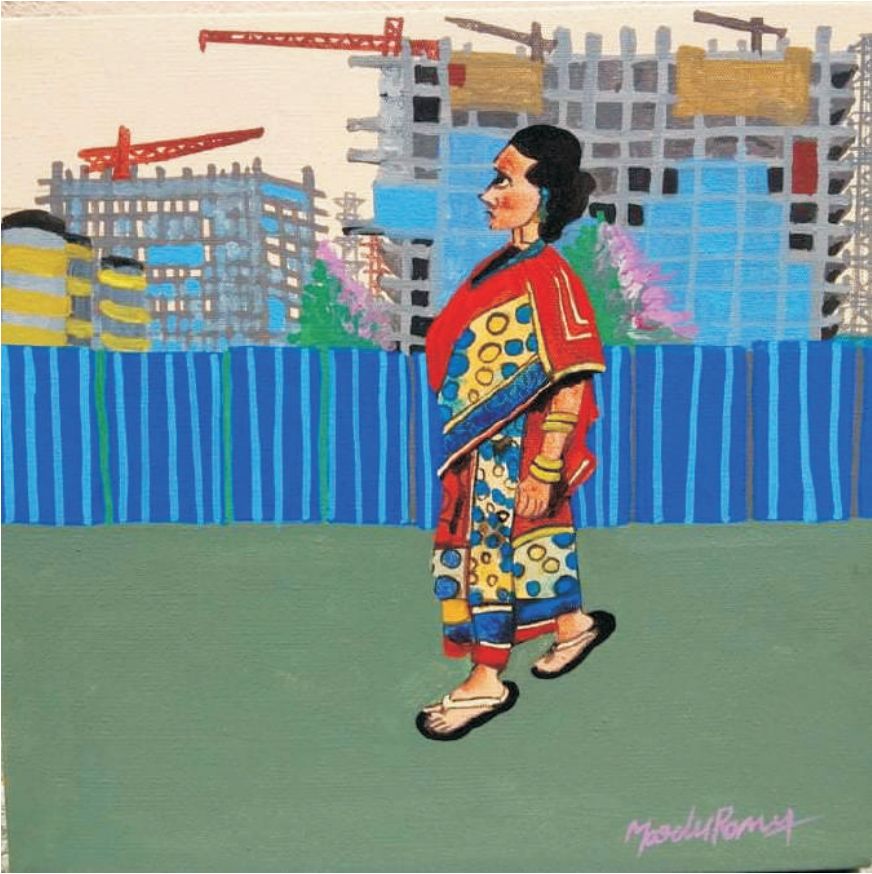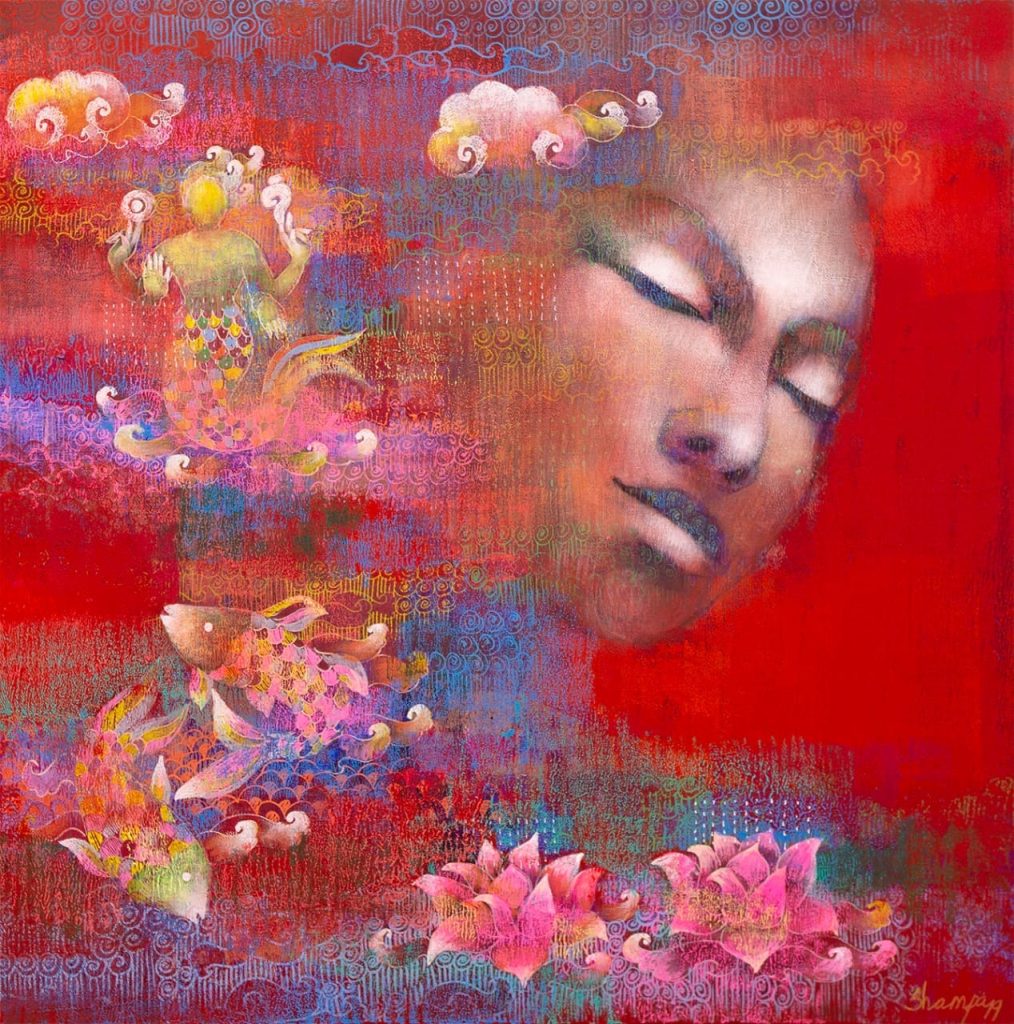Ved Prakash Bhardwaj
The environment we live in is changing quickly, especially in urban areas. Although villages are now also experiencing change, urban areas are experiencing it more quickly. When we return to our city after a while, it gets harder to recognize. The drive for growth significantly alters both our present and our memories. Whatever we see right now or have seen up until this point changes. Every day, new buildings are being built, new identities are emerging, and the old ones are being destroyed in the process. An artist preserves the present in his paintings between the creation of a new identity and the demise of the old; perhaps he does this to preserve the changing times for the future. Maredu Ramu, the artist, is a native of Hyderabad. He now has a solo show at the MKF Museum of Art in Bangalore called “A Walk Through The City.”
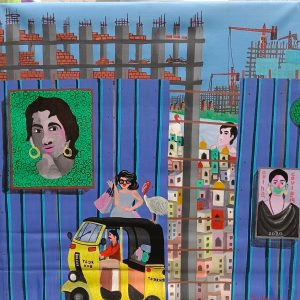
Any metropolis takes on a completely different appearance in the minds of the younger generation than it does in the recollections of the older generation. A city’s identity can be found in its structures, roads, way of life, cuisine, modes of transportation, and even in movie trailers. Both a cultural and a historical identity may be found in Hyderabad. This identity is quickly evolving. Ramu notes this modification on Canvas. He claims, “My art is not mystical. I depict what the average person sees and can understand. I create sceneries from everyday life as a result of being inspired by and influenced by my environment.” Because of this, we notice that he often depicts multi-story structures that are still under construction alongside the metro on one side and a pedestrian on the other. He claims that progress is necessary, but that there is no room for auto rickshaws, tea shops, Hyderabadi Biryani, unique Iranian tea, or any of these in the current development. The traditional clothing that served as the city’s identity has been erased by the new style.
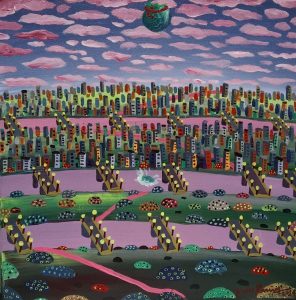
Through his paintings, Ramu is attempting to preserve this identity for future generations. He depicts peacocks, parrots, or flowers sprouting on concrete pillars as a critique of the continual destruction of nature in the cement-concrete jungle. A slightly paradoxical sight is created by a woman wearing traditional attire passing by construction sites. The presence of new buildings below and above, as well as the depiction of donkeys together, in the artwork that also features Hyderabad’s Charminar can be interpreted as a parody of a city tampering with its history.
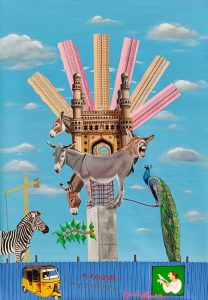
A city’s culture also evolves just like its structural shape does, when it transforms. The outlook of the city also changes as lifestyles change. When we examine Hyderabad or any other city that is evolving and expanding, we see that grandeur has arrived but familiarity has ended. It’s hard to assess whether the population of the city has grown or whether people still adore it. On his canvas, Ramu’s thoughts about this challenge are depicted.
Every city has a history. Monuments, old streets, businesses, people, food and attire, folk culture, movies, and folk art are all included in those memories. The only ways to preserve these memories are through literature and art. That is why Ramu uses pictures like this in his paintings to preserve both the past and the present as memories for the future. He also highlights the contrast between contemporary and historical beauty symbols.

